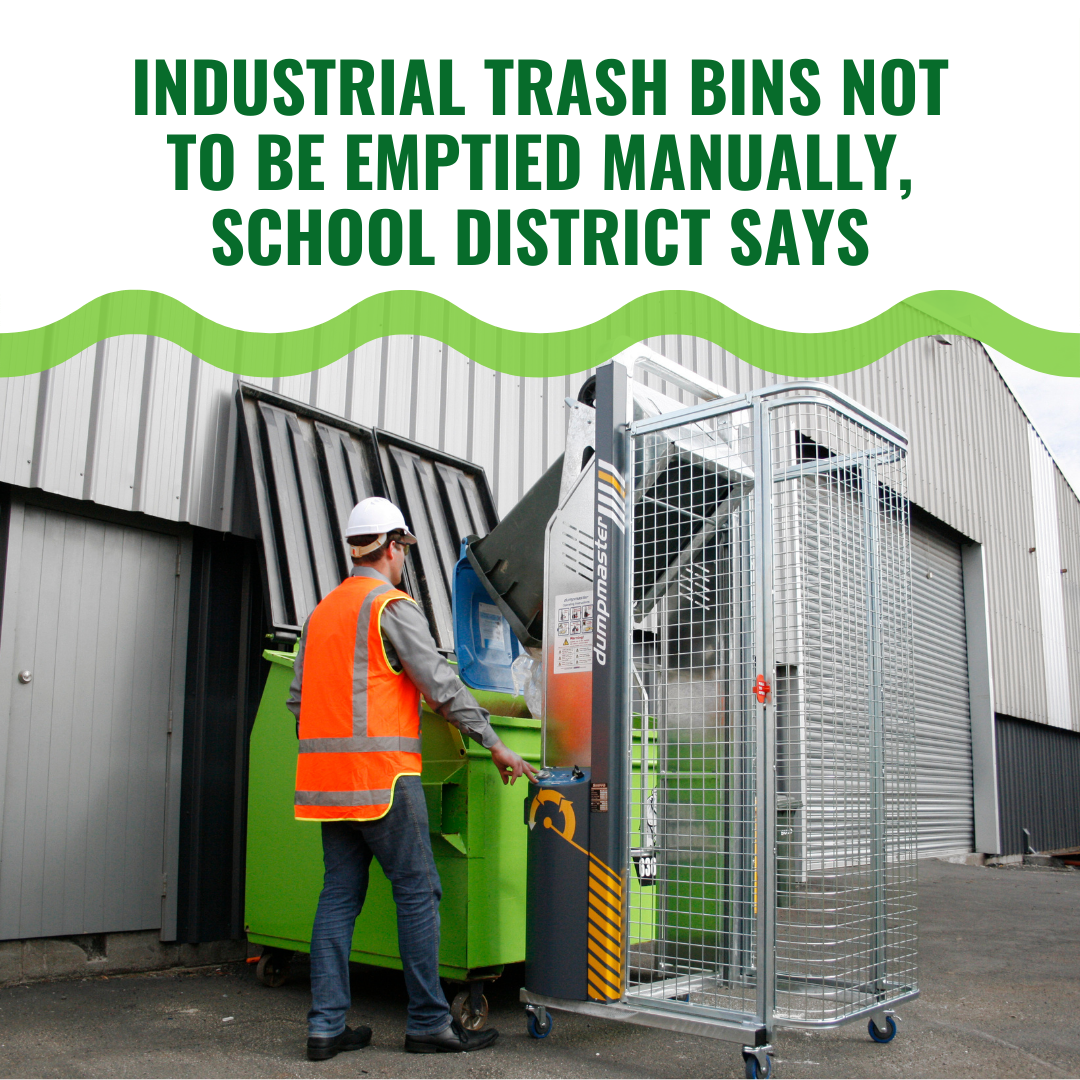We use cookies to make your experience better. To comply with the new e-Privacy directive, we need to ask for your consent to set the cookies. Learn more.
Industrial Trash Bins Not to Be Emptied Manually, School District Says
Not too long ago, a Queensland, Australia school district incurred serious costs due to injured maintenance workers. Each injured employee required an average of 46 days of sick time and the district ended up paying an average cost of $4,470 per employee. The culprit? Manually lifting trash bins to empty them into dumpsters.

While many janitorial crews view this task as a necessary evil, there is clear evidence that bending while lifting greatly increases the likelihood of a musculoskeletal disorder and should be avoided. It's easier to see the problem when you understand that an empty trash can that weighs 30 pounds can total up to 330 pounds when full.
The school district in question, Brisbane Catholic Education, had enough. Management prohibited the manual emptying of large trash cans by janitorial staff. The district offered its schools a number of alternative disposal methods, including:
-
Lifting bins with two or more people
-
Using smaller bins.
-
Subscribing to curbside collection.
-
Employing a Bin Dumper.
The district left the choice to individual schools, who had to weigh the pros and cons of each alternative.
A closer look at these options proves that not all of them eliminate ergonomic risks.
For instance, lifting bins with two people mitigates some of the injury risk, but there is still a hazard due to the bending and lifting. This option also requires that two janitors be available at the same time to dump bins which can complicate scheduling and increase staffing costs.
Replacing large bins with smaller ones reduces the ergonomic risk, but it doesn't eliminate the hazard. Even small bins filled with heavy materials are unsafe for manual lifting.
Curbside collection solves the ergonomic problem by letting garbage collectors use their machinery to empty bins. However, it requires ongoing payment and is an unrealistic option for larger schools. It can also create traffic bottlenecks by restricting available space in front of the school.
Bin Dumpers are the best solution in this situation because they allow one employee to safely and quickly dump a heavy trash can. Models like the Multi-Tip have a powder-coated, galvanized-steel frame that allow for outdoor storage. Its casters allow for easy transport among dumping sites, so one employee can dump landfill waste, recycling, and compost in turn.
Make no mistake, schools create a lot of waste.
From uneaten fruit cups to last semester's notes, schools generate tons of waste. A study by the Minnesota Pollution Control Agency found that Minnesota schools create almost half a million pounds of waste every day. And that's just one state.
On the bright side, many K-12 schools have created recycling and composting programs to reduce waste headed to the landfill. These programs result in large amounts of recyclable and compostable material. That's great for the environment, but it presents yet another lifting hazard.
Bin Dumpers can help maintenance staff with these applications as well. Versatile, heavy-duty models like the Dumpmaster can lift and dump a wide variety of bins, drums, crates, and tubs. A single janitor can wheel the tipper to the landfill dumpster, recycling receptacle, or compost pile depending on which bin they're emptying.
As more school administrators study their maintenance budgets, the true cost of ergonomic risks will make hydraulic trash can dumpers a more and more attractive investment. Bin Dumpers make emptying trash cans easier, safer, and ultimately cheaper by reducing staff injuries. That's good for maintenance staff, and it's good for school budgets too. And in some school districts, like Brisbane Catholic Education, it's policy.
References:
"Large Wheelie Bins Not to be Manually Lifted." QLD. Brisbane Catholic Education, 2005. PDF. 12 Dec. 2017.
"Materials Handling: Heavy Lifting." OSHA. U.S. Occupational Safety and Health Administration, n.d. Web. 12 Dec. 2017.
"Minnesota Pollution Control Agency School Waste Study." PCA. Minnesota Pollution Control Agency, n.d. Web. 12 Dec. 2017.
